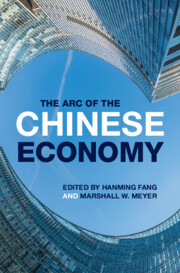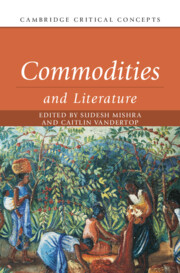Refine search
Actions for selected content:
578 results
3 - The Imposition of Human Rights Enforcement
-
- Book:
- New Regional Authorities
- Published online:
- 17 December 2025
- Print publication:
- 08 January 2026, pp 62-87
-
- Chapter
- Export citation
Chapter 3 - Silks and Velvets / The Fabrics of English Identity
- from Part II - The Treasury
-
- Book:
- The Desire for Syria in Medieval England
- Published online:
- 01 December 2025
- Print publication:
- 18 December 2025, pp 99-123
-
- Chapter
- Export citation
2 - Trade, Race, and Class in Early Modern England
- from Part I - Early Intimations and Literary Genres: 1500–1800
-
-
- Book:
- The Cambridge Companion to British Literature and Empire
- Published online:
- 20 November 2025
- Print publication:
- 04 December 2025, pp 36-49
-
- Chapter
- Export citation

The Desire for Syria in Medieval England
-
- Published online:
- 01 December 2025
- Print publication:
- 18 December 2025
10 - From Estrangement to Engagement, 1921–1933
-
- Book:
- Distant Friends and Intimate Enemies
- Published online:
- 30 October 2025
- Print publication:
- 20 November 2025, pp 196-218
-
- Chapter
- Export citation
1 - War of Want
-
-
- Book:
- Hunger Redraws the Map
- Published online:
- 01 November 2025
- Print publication:
- 20 November 2025, pp 18-43
-
- Chapter
- Export citation

The Arc of the Chinese Economy
-
- Published online:
- 30 October 2025
- Print publication:
- 13 November 2025

Commodities and Literature
-
- Published online:
- 14 October 2025
- Print publication:
- 09 October 2025

Ancient Assyrians
- Identity and Society in Antiquity and Beyond
-
- Published online:
- 09 October 2025
- Print publication:
- 23 October 2025
2 - Europe from Obscurity to Economic Recovery
-
- Book:
- An Economic History of Europe
- Published online:
- 02 October 2025
- Print publication:
- 02 October 2025, pp 39-63
-
- Chapter
- Export citation
1 - The Making of Europe
-
- Book:
- An Economic History of Europe
- Published online:
- 02 October 2025
- Print publication:
- 02 October 2025, pp 15-38
-
- Chapter
- Export citation
8 - Trade and Globalization
-
- Book:
- An Economic History of Europe
- Published online:
- 02 October 2025
- Print publication:
- 02 October 2025, pp 178-203
-
- Chapter
- Export citation
24 - European sea power and the origins of European domination, 1800–1850
-
-
- Book:
- The Cambridge History of War
- Published online:
- 18 July 2025
- Print publication:
- 14 August 2025, pp 573-601
-
- Chapter
- Export citation
5 - Trade, Markets, Capitalism
- from Part II - Notions and Practices of Equality
-
- Book:
- Democracy's Double Helix
- Published online:
- 09 September 2025
- Print publication:
- 14 August 2025, pp 141-150
-
- Chapter
- Export citation
Tariffs versus Subsidies: Protection versus Industrial Policy
-
- Journal:
- World Trade Review / Volume 24 / Issue 4 / October 2025
- Published online by Cambridge University Press:
- 11 August 2025, pp. 430-437
- Print publication:
- October 2025
-
- Article
-
- You have access
- Open access
- HTML
- Export citation
Trade and Exchange Rate Competition in East Asia
-
- Journal:
- International Organization / Volume 79 / Issue 3 / Summer 2025
- Published online by Cambridge University Press:
- 19 August 2025, pp. 526-546
- Print publication:
- Summer 2025
-
- Article
-
- You have access
- Open access
- HTML
- Export citation
25 - Travel and Communication
- from Part II - Artefacts and Evidence
-
- Book:
- The Cambridge Encyclopaedia of Late Antique Art and Archaeology
- Published online:
- 04 July 2025
- Print publication:
- 31 July 2025, pp 458-476
-
- Chapter
- Export citation
6 - Asymmetries
- from Part III - Connections
-
- Book:
- Fractured Pasts in Lake Kivu’s Borderlands
- Published online:
- 17 July 2025
- Print publication:
- 31 July 2025, pp 203-224
-
- Chapter
- Export citation
Chapter 1 - The nature of international law
-
- Book:
- International Law
- Published online:
- 26 July 2025
- Print publication:
- 31 July 2025, pp 1-49
-
- Chapter
- Export citation
The Relativity of fides: Faith Language, Commerce and Interreligious Trust in the Crown of Aragon, c. 1240–1350
-
- Journal:
- Transactions of the Royal Historical Society / Volume 3 / December 2025
- Published online by Cambridge University Press:
- 21 July 2025, pp. 31-52
- Print publication:
- December 2025
-
- Article
-
- You have access
- Open access
- HTML
- Export citation
